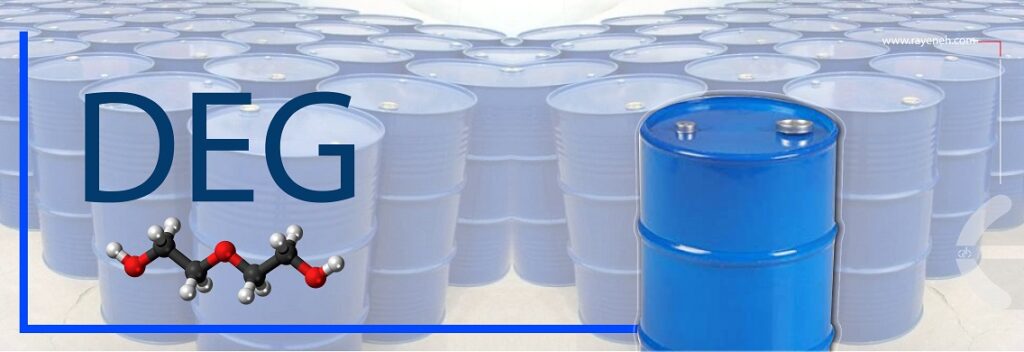
DEG is an organic, transparent, moisture-absorbing, odorless compound, as well as an oily, colorless, sweet, and moisture-friendly liquid. Under normal conditions, it does not have a specific smell, but in high vapor concentration, it may have a mild sweet smell.
This substance is miscible with water and organic solvents (it can be dissolved in them at any concentration).
Diethylene glycol has two ethylene groups that are connected to each other by an oxygen atom, and like other dihydric alcohols, it has two OH groups.
This organic compound is flammable and toxic and can be dissolved in water, alcohol, ether, acetone and ethylene glycol. (Ethylene glycol (EG) is the simplest member of the glycol family.)
This substance can react with sulfuric acid, nitric acid, oxygen, hydrogen peroxide, perchloric acid and other strong acids and usually plays an essential role in the production of unsaturated polyester resins (UPR), plastics, acrylate and methacrylate resins.
| Properties | Value |
|---|---|
| Molecular mass | 106.12 g/mol |
| Density | 1.118 g/mL |
| Appearance | Colorless liquid |
| Melting point | −10.45 °C |
| Boiling point | 244 °C |
| Solubility in water | miscible |
Application
- Solvent
- Unsaturated polyester resins, polyurethanes and softeners
- Printing ink
- Lubricating agent for natural and synthetic fibers
Packing
This chemical can be supplied in 230 kg barrels.
Chemical Formula
- C4H10O3
Other names
- 2,2′-Oxybis(ethan-1-ol)
- 2-(2-Hydroxyethoxy)ethan-1-ol
- Diethylene glycol
- Ethylene diglycol
- Diglycol
- 2,2′-Oxybisethanol
- 2,2′-Oxydiethanol
- 3-Oxa-1,5-pentanediol
- Dihydroxy diethyl ether
- Digenos
- Digol
